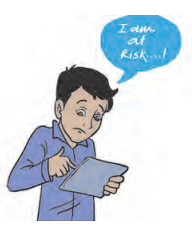Question Answers For All Chapters – General Science Class 8
Exercise
1. Answer the following in your own words:
(a) Explain the relation between continuous rains and landslides. Give reasons.
- Continuous rains loosen the soil and increase its weight due to water absorption.
- Water enters the cracks in rocks, causing them to break.
- The soil and rocks slide down hills, blocking roads, damaging buildings, and changing river paths.
(b) Prepare a chart showing ‘Do’s’ and ‘Don’ts’ at the time of an earthquake.
| Do’s | Don’ts |
|---|---|
| Stay calm and take cover under a table. | Do not run outside in panic. |
| Move to an open area if outside. | Do not use elevators in buildings. |
| Switch off electrical and gas connections. | Do not stand near windows or glass objects. |
| Use a torch instead of candles after an earthquake. | Do not spread false information. |
(c) What are the specifications of an earthquake-proof building?
- The foundation should be separated from the ground to absorb shocks.
- Buildings should be made using light and flexible materials.
- Use of strong columns and reinforced concrete improves safety.
- Buildings should follow IS 1893 and IS 13920 codes for earthquake-resistant construction.
(d) Explain the effects of landslides.
- Floods occur as rivers get blocked or change paths.
- Trees, buildings, and rocks slide down, causing loss of life and property.
- Roads and railways get blocked, affecting transport.
- Crops and forests are destroyed, harming the ecosystem.
(e) Is there any relation between dams and earthquakes? Explain.
- Yes, large dams create pressure on the Earth’s crust, which may cause earthquakes.
- Water stored in dams seeps into the ground, loosening rocks and causing tremors.
- Reservoir-Induced Seismicity (RIS) occurs when water fills reservoirs and increases stress on rocks.
2. Give Scientific Reasons:
(a) It is safer to find shelter under things like a bed or table during an earthquake.
- A table or bed provides protection from falling objects and debris.
- It reduces the risk of injuries from ceiling collapse.
(b) In monsoon, don’t take shelter near hillsides.
- Hillsides become unstable due to heavy rainfall, leading to landslides.
- Large rocks and mud can fall suddenly, causing danger.
(c) Don’t use lifts at the time of an earthquake.
- Power failure can trap people inside lifts.
- Staircases are safer as they do not collapse easily.
(d) The foundation of an earthquake-proof building is separated from other land.
- A separate foundation absorbs earthquake shocks, reducing damage.
- It prevents the entire building from shaking violently.
3. If a crowd gathers at the place of an earthquake, what would be the difficulties in relief work?
- Traffic jams delay ambulances and rescue teams.
- Shortage of food, water, and medical supplies due to overcrowding.
- Panic and confusion make it hard to evacuate injured people.
- Increased risk of aftershocks causing further damage.
4. Make a list of the institutes and organizations that provide help for disaster management.
- NDRF (National Disaster Response Force) – Handles rescue operations during floods, earthquakes, and landslides.
- IMD (Indian Meteorological Department) – Predicts weather conditions and earthquakes.
- WHO (World Health Organization) – Provides medical support after disasters.
- Red Cross Society – Supplies food, water, and first aid to disaster-affected people.
5. Make a survey of your school according to the plan of disaster management and write the pointwise information.
- Total number of students and staff in school.
- Location of fire extinguishers and first aid kits.
- Emergency exits and open spaces for evacuation.
- Contact details of nearby hospitals and police stations.
- Plan for earthquake and fire safety drills.
6. Are there any possible places of landslides in your area? Collect information from experts.
- Hilly areas and places near rivers are prone to landslides.
- Deforestation and road construction make the land weak.
- Experts suggest planting trees and reducing soil erosion to prevent landslides.
7. With the help of the following picture, explain your role in disaster management.
- Helping injured people by providing first aid.
- Informing rescue teams about missing persons.
- Distributing food and water to affected people.
- Following safety guidelines and spreading awareness.


Leave a Reply